ASUS MeMO Pad HD7 Review: $149 Nexus 7.1 Successor & Our First Look at MediaTek's MT8125
by Anand Lal Shimpi on July 29, 2013 3:55 PM EST- Posted in
- Tablets
- Asus
- Mobile
- Android 4.2
- MeMO Pad
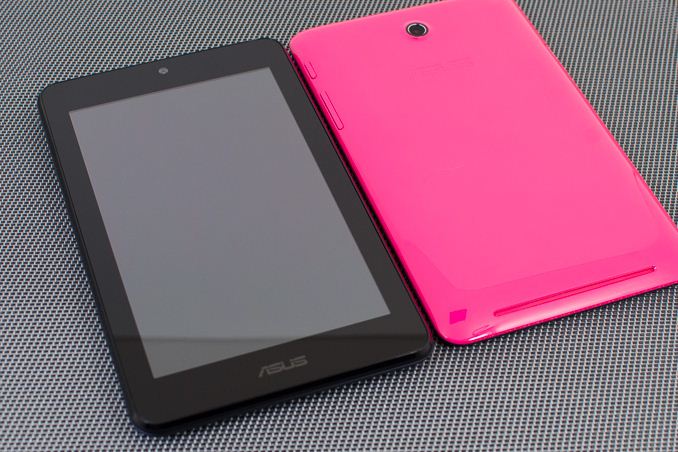
The tablet market is presently caught in a race to the bottom, at least in terms of pricing. The shift from the initial crop of 10-inch tablets to 7/8-inch models is well under way, and with that shift comes downward pricing pressure.
Even Apple isn't immune from this, with the iPad mini priced at around 65% of its bigger brother - itself being priced lower than many expected upon its introduction in 2010.
Unlike in the traditional PC industry however, huge sacrifices in display quality, user input or overall performance just aren't tolerated as well in the present tablet market. Consumers want cheaper tablets, but they can't devolve into unresponsive devices with compromised user experience. There's a certain minimum level of quality that needs to be met.
Last year Amazon, and later ASUS/Google redefined what we should expect from a $199 tablet. Amazon was the first to give us decent hardware at that price point with the original Kindle Fire, and ASUS/Google blew it out of the water with the original Nexus 7. The 7-inch tablet gave us virtual performance parity with high-end devices out at the time. Add in the latest version of Android and a decent display and all of the sudden we had a wonderful tablet option at $199.
This year ASUS and Google were both under pressure to seriously improve the Nexus 7. The combination of a better display, better WiFi and better SoC all led to an awesome device, with an unfortunately higher price point ($229). While I don't expect anyone looking for a premium 7-inch tablet to have issues with the new price point, the new Nexus 7 does run the risk of leaving us with no good option below $200.
To fill the void ASUS chose to build an updated version of the tablet that turned into the original Nexus 7: the 7-inch MeMO Pad. In many senses, the new MeMO Pad HD7 is the true replacement to last year's Nexus 7. It features a similar 1280 x 800 IPS panel, very similar dimensions, and in many cases it offers similar performance. The biggest improvement? Price. The MeMO Pad HD7 starts at $149 for a 16GB model (there's a $129 8GB model available outside of North America as well).
| ASUS 7-inch Tablet Specification Comparison | |||||
| ASUS MeMO Pad HD7 | ASUS Nexus 7 (2012) | ASUS Nexus 7 (2013) | |||
| Dimensions | 196.8 x 120.6 x 10.8mm | 198.5 x 120 x 10.45mm | 200 x 114 x 8.65mm | ||
| Chassis | Plastic + Matte or Glossy back | Plastic + Rubber back | Plastic + Soft Touch back | ||
| Display | 7-inch 1280x800 IPS | 7-inch 1280x800 IPS | 7.02-inch 1920x1200 IPS | ||
| Weight | 302g | 340 g | 290 grams (WiFi), 299 grams (LTE) | ||
| Processor | 1.2GHz MediaTek MT8125 (4 x Cortex A7) | 1.3 GHz NVIDIA Tegra 3 (T30L - 4 x Cortex A9) | 1.5 GHz Qualcomm Snapdragon S4 Pro (APQ8064) | ||
| Memory | 1GB DDR3L | 1 GB | 2 GB DDR3L | ||
| Storage | 8GB / 16GB | 8 GB / 16 GB | 16 GB / 32 GB | ||
| Battery | 15.01 Wh | 16 Wh | 15.01 Wh | ||
| WiFi/Connectivity | 802.11b/g/n, BT | 802.11b/g/n, BT, NFC | 802.11a/b/g/n, BT 4.0, NFC | ||
| Camera |
5.0 MP Rear Facing w/AF 1.2MP Front Facing |
– |
5.0 MP Rear Facing w/AF 1.2MP Front Facing |
||
| Wireless Charging | - | – | Yes (Qi Compatible) | ||
| Pricing | $129/$149 | $199/$249 |
$229/$269 (WiFi 16/32 GB) $349 (LTE) |
||
Design
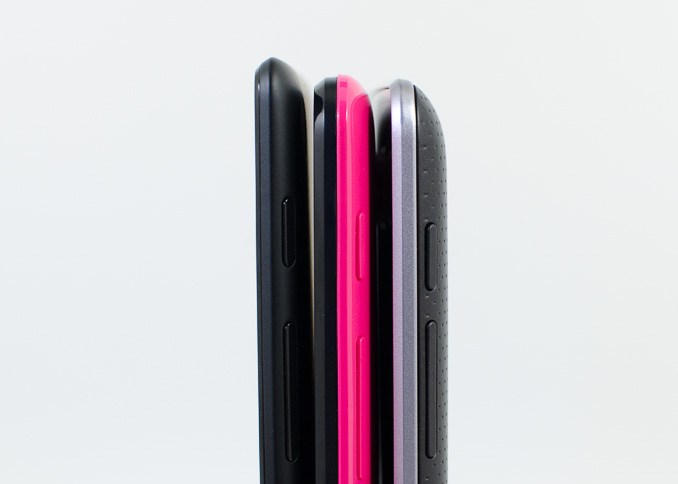
From left to right: Nexus 7 (2013), MeMO Pad HD7, Nexus 7 (2012)
The MeMO Pad HD7 is ever so slightly shorter (-1.7mm), but a hair thicker (+0.24mm) and wider (+0.6mm) than the Nexus 7. The < 2% increase in device volume comes with a reduction in weight, from 340 grams down to 302 grams. The difference appears mostly in materials choice. The rubber back of the original Nexus 7 is replaced by either a smooth matte or glossy plastic back.
ASUS offers the MeMO Pad HD7 in five different colors: white, pink, green, blue and black. The first three use glossy plastic backs while the last two have a matte look.
The potentially colorful back protrudes slightly along the edges of the tablet. It's an odd design choice, one that I can only assume makes manufacturing/assembly a bit easier. It's not a huge problem once you get used to the device, but anyone used to a Nexus 7 will notice the difference immediately.
The micro USB port gets moved up to the top of the device in the HD7, attaching it directly to the main PCB and removing the need for the long flex cable ASUS had to use in the original Nexus 7. Similarly, the audio/mic jack is located up top.
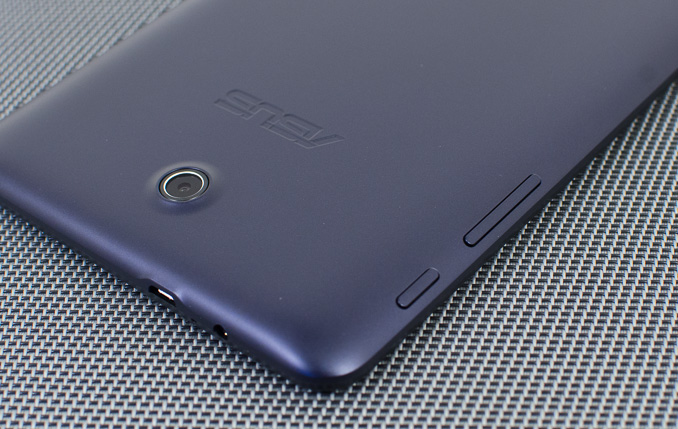
There are only three physical buttons on the MeMO Pad HD7 - power/lock, volume up and volume down. The buttons don't feel quite as mushy as they do on the new Nexus 7
Google was pretty adamant against including a microSD slot in the original Nexus 7 (preferring a combination of internal and cloud storage), but ASUS put one back in the design of the MeMO Pad HD7.
The HD7 does inherit some features from the new Nexus 7 starting with stereo speakers. Although there's a single speaker grille on the back of the MeMO Pad HD7, there are two physical speakers behind it.
Also like the new Nexus 7, there are both front (1.2MP) and rear facing (5MP) cameras in the MeMO Pad HD7.
Finally, the internal battery is nearly identical to the one used in the new Nexus 7. The model numbers are slightly different (C11P1304 vs. C11P1303 for the N7.2), but both are 3.8V 3950mAh li-polymer batteries (15Wh capacity).
I noticed some light creaking if I squeezed the corners of the HD7, but for the most part the device feels well built for a $149 tablet. You definitely lose a bit of that high end feel now that the rubber back of the Nexus 7 is gone, the entire device feels more plasticky, but again at this price point there have to be sacrifices. For what it's worth, the finish on the matte back feels a bit better than the flashier colors.
The reduced weight is nice, but I still ended up propping the tablet against something whenever I watched long TV episodes or movies.


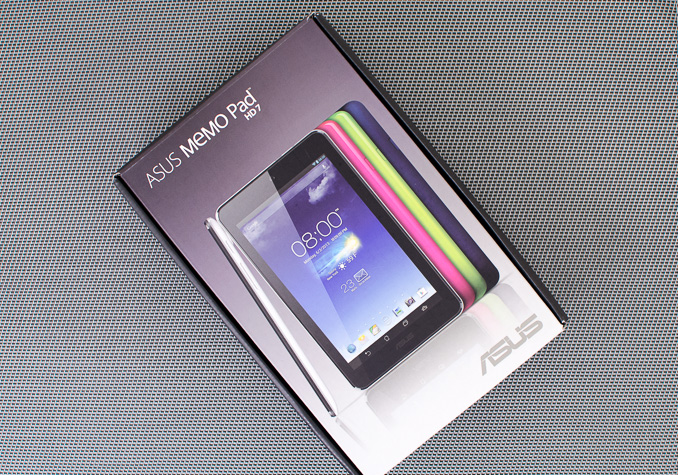
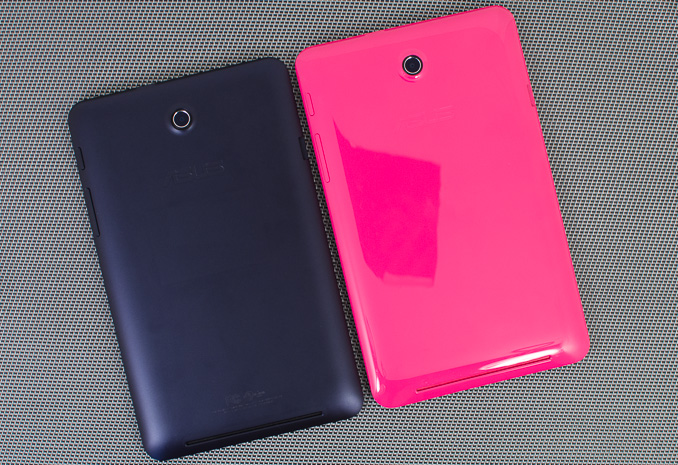
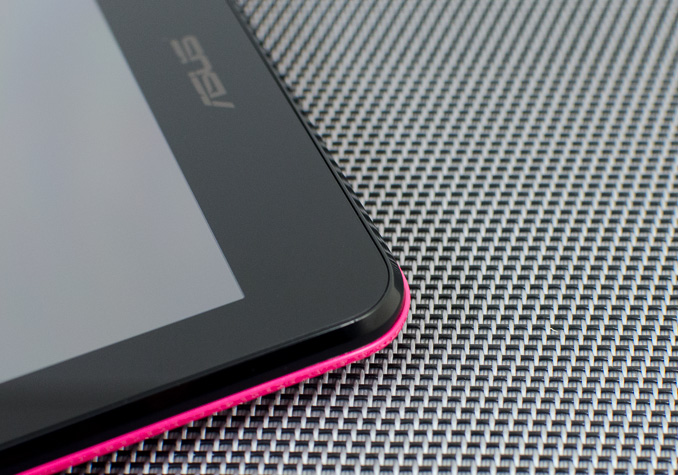
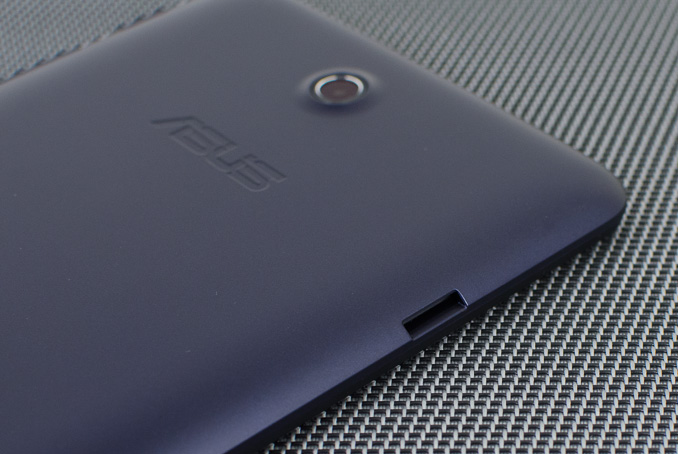
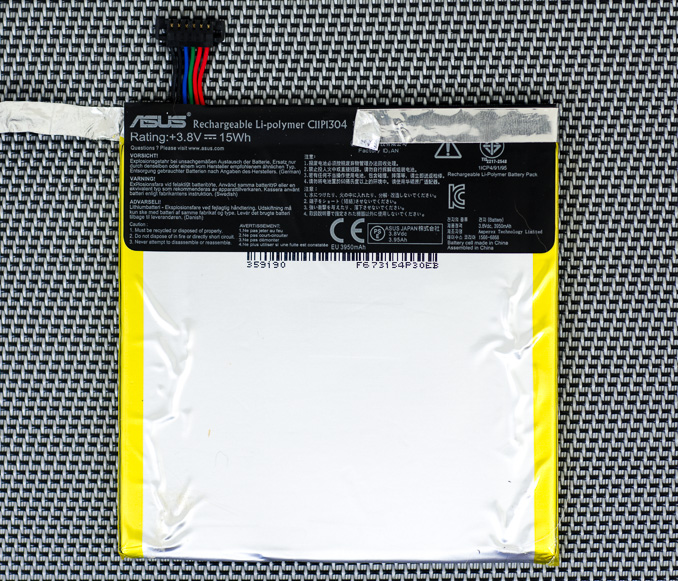








75 Comments
View All Comments
n0b0dykn0ws - Monday, July 29, 2013 - link
Given the MicroSD card slot I would highly consider getting one of these and using it for on the go media, especially for the kids.YaBaBom - Tuesday, July 30, 2013 - link
+1 for kids... Especially since this tablet actually outlasts the Nexus 7 in the 3D tests--i.e. gaming. Seems like a pretty well balanced tablet.synaesthetic - Wednesday, July 31, 2013 - link
Shame the 8GB model isn't available in the US. >< I would love to have the 8GB model and throw a bigass sdcard in it, then fill it full of movies.anxyandy - Thursday, August 8, 2013 - link
Hmm, I think the SD card is the only advantage over the Nexus 7! I would just pay the tiny bit extra, for what is one of the best tablets on the market!!!Have a look:
Direct updates by OS vendor Yes vs No It can be updated directly by the OS vendor, so no need to wait until the manufacturer or network provider releases an update.
Significantly higher pixel density 323 ppi vs 216 ppi 49.54% higher pixel density.
Reasonably more RAM memory 2 GB vs 1 GB 1 GB more RAM memory.
Lots narrower 114 mm vs 120.6 mm 6.60 mm narrower.
Thinner 8.65 mm vs 10.8 mm 2.15 mm thinner.
Much faster CPU clock speed 4 x 1.5 GHz vs 4 x 1.2 GHz 25% faster CPU clock speed.
Has NFC Yes vs No Near-field-communication (NFC) allows wireless transactions like payments.
Wireless charging Yes vs No It can be charged w/o any plugs and wires similar to electric shavers or toothbrushes (as extra).
Source; http://versus.com/en/asus-memo-pad-hd7-vs-google-n...
BryanDobbins - Saturday, August 17, 2013 - link
my buddy's aunt earned $14958 past week. she been working on the laptop and got a $510900 home. All she did was get blessed and put into action the information leaked on this site... http://xurl.es/qa0ukuhuznaa - Monday, July 29, 2013 - link
Does the MicroSD slot support SDHX? Or in other words: What size of potential memory expansion are we talking about here?Death666Angel - Monday, July 29, 2013 - link
Found one guy in a forum saying his 64GB SDXC doesn't work, but he didn't elaborate on the file system used or what didn't work.gorskiegangsta - Monday, July 29, 2013 - link
I believe SDXC cards use the ExFAT format.madmilk - Monday, July 29, 2013 - link
Maybe exFAT is the most common, but there's nothing stopping you from formatting an SD card as say, ext4.hrrmph - Monday, July 29, 2013 - link
64GB Micro-SDXC cards from SanDisk come pre-formatted with exFAT.I can attest that they work fine in a Samsung Note 2 and it's widely published on forums that other Samsung devices work fine with these cards.
The Blackberry Z10, and possibly other BB OS 10 devices, require the card to be reformatted to FAT32. This works fine, except that you are subjected to the 4GB file size limit of FAT32. For most uses this isn't a problem, but if part of your usage scenario is wanting to backup a few large files, in addition to all of the smaller, more typical file sizes that you would normally carry, then the Blackberry isn't the appropriate tool.
Also, you cannot then swap Micro-SDXC cards between a Blackberry device and a device that uses the more modern exFAT file system. For example, lets say you shot photos and video using a Z10 and saved it on the Micro-SDXC card in the required FAT32 format. You couldn't then put the card into a more modern tablet's Micro-SDXC exFAT enabled slot to display the photos and video to your friends.
But, if you shoot photos and video on a Samsung device (Note 2, S4, S4 Mini), you could then swap the Micro-SDXC exFAT card over to another device with a Micro-SDXC exFAT enable slot (I believe the Samsung Note 8, Tab 7, and possibly some of the other major name brand soon-to-be-released devices coming out of Asia) to easily display your photos and video to friends and family.
Many of the smaller devices are shooting 1080P video, but I'm not aware of any 7" or 8" tablet with a Micro-SDXC exFAT enabled slot that has the requisite 1080P screen to display the videos in full resolution once the Micro-SDXC card is swapped over to the larger display device.
In addition to capacity expansion, I also find it easier to get files in and out of my devices and PCs quickly with the Micro-SDXC cards.
That is why (for me) it is so frustrating to see Google Asus build such a nice Gen 2 Nexus 7, but leave off the fundamentally important Micro-SDXC slot. My main reason for wanting to replace my Gen 1 Nexus 7 is the lack of a Micro-SDXC slot. The Samsung Note 8 has the slot, but lacks the 1080P display.
Coming back to the Asus HD7, I realize that it is a budget device and makes no attempt to compete at the high end. The screen isn't 1080P for example. But, until we get devices that universally have Micro-SDXC exFAT enabled slots, we are looking at a fragmented market where devices don't inter-operate that well together.
It would be interesting to know what the retail incremental cost of a Micro-SDXC exFAT enabled slot is compared to the cost of a Micro-SDHC slot.
Maybe Asus can't hit their target price on the HD7 with a modern Micro-SDXC slot. Or maybe they are taking a page out of Samsung's book (e.g. S4 Mini) and will under-promise and over-deliver by giving us the more modern slot in the end anyway.